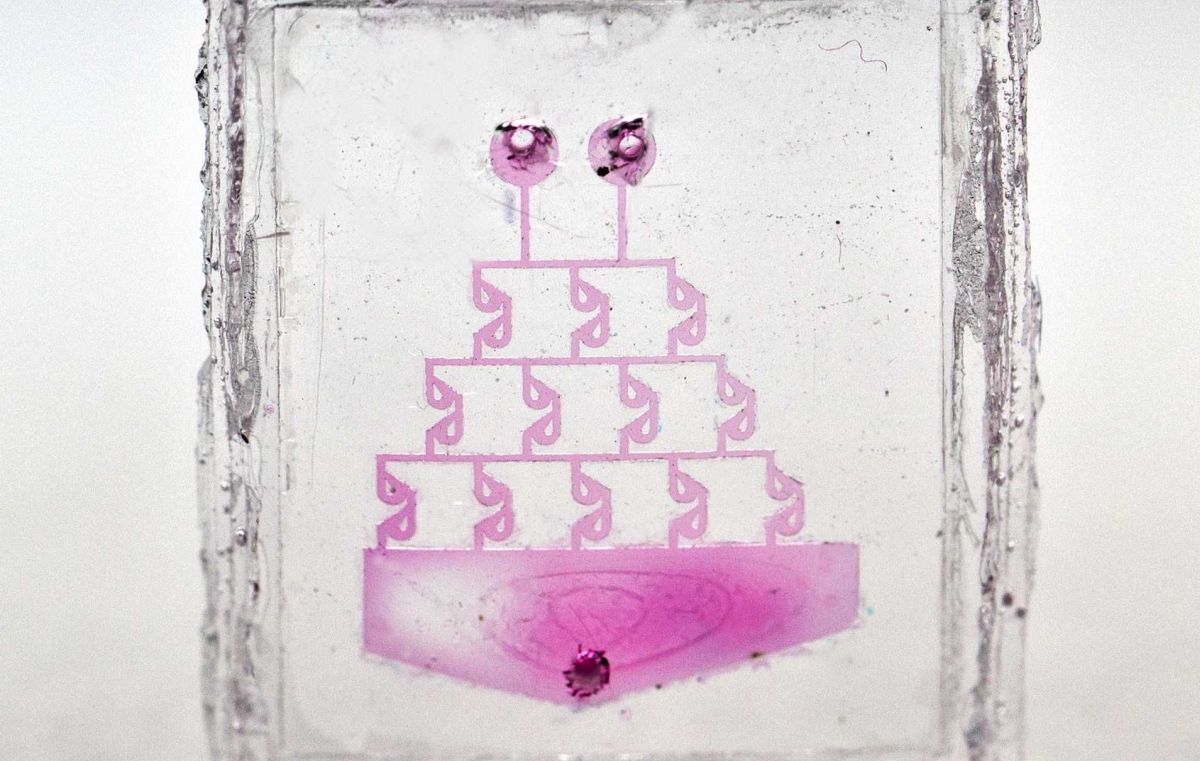Researchers at the Karlsruhe Institute of Technology (KIT) have developed a method for 3D printing glass. The process, which has been described in Nature and was demonstrated at the Hannover Messe trade fair in April, could open up new applications in production and research, including optics, data transmission, and biotechnology, the researchers have said.

Complicated high-precision structures made of glass can be manufactured in a 3D-printing process developed at the KIT (Credit: KIT)
The KIT team, led by mechanical engineer Dr Bastian E Rapp, mixed nanoparticles of high-purity quartz glass and a small quantity of liquid polymer and then allowed the mixture to be cured by light at specific points – by means of stereolithography. The material, which has remained liquid, is washed out in a solvent bath, leaving only the desired cured structure. The polymer, still mixed in this glass structure, is subsequently removed by heating.
‘The shape initially resembles that of a pound cake; it is still unstable, and therefore the glass is sintered in a final step – i.e. heated so that the glass particles are fused,’ explained Rapp. He conducts research at the KIT Institute of Microstructure Technology and heads a working group of chemists, electrical engineers, and biologists.
The KIT team are not the first to additively manufacture glass; in 2015, researchers from the Massachusetts Institute of Technology (MIT) developed a 3D printer capable of producing optically transparent glass components. The system uses temperatures of more than 1,000ºC to produce glass with light transmission, reflection and refraction that can be controlled.
However, according to the KIT researchers, melting and application by means of a nozzle results in surfaces that are rough, and material that is porous and contains voids. ‘We present a new method, an innovation in materials processing, in which the material of the piece manufactured is high-purity quartz glass with the respective chemical and physical properties,’ explained Rapp.
The glass structures made by the KIT scientists show resolutions in the range of a few micrometres – one micrometre corresponding to one thousandth of a millimetre. However, the structures may have dimensions in the range of a few centimetres, emphasizes Rapp.
3D-formed glass can be used, for instance, in data technology. ‘The next plus one generation of computers will use light, which requires complicated processor structures; 3D-technology could be used, for instance, to make small, complex structures out of a large number of very small optical components of different orientations,’ explained Rapp.
For biological and medical technologies, very small analytical systems could be made out of miniaturized glass tubes. In addition, 3D-shaped microstructures of glass could be employed in a variety of optical areas, from eyeglasses meeting special requirements to lenses in laptop cameras.

